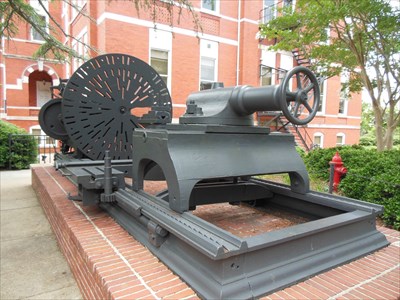
Context:
Informant CA, a current undergraduate student at Auburn University at the time of this collection, described a popular folk belief shared by university students. This belief had existed before CA became a student at the univeristy, however, CA learned about this belief only once they had become an undergraduate student themself.
The belief centers around a statue called The Lathe which is located on Auburn University’s campus. The Lathe dates back to the Civil War where it was used to manufacture military supplies for confederate soldiers. It was gifted to a sorority on campus and can be found on the side of Samford Hall.
Text:
The Auburn folk belief is that Auburn students can bring their significant other to The Lathe at midnight to test their faithfulness to one another. After they kiss next to The Lathe, if the wheel of the Lathe does not move then they have been faithful to each other and are believed to get married.
Analysis:
This folk belief is one of the many traditions that are known and shared across the student population at Auburn University. I feel that this particular belief speaks towards the cultural and communal values at Auburn Univerity. While its students come from all across the world, Auburn University is located in Alabama and, therefore, the “Bible Belt. ” Southern states are often known for their close affiliations with Christianity which shape “southern values.” While not all students would identify as religious or southern, the value of faithfulness is evident in this popular folk belief and run parallel with southern/religious values. Since folk beliefs create identity and culture, the values underlying this belief speak to Auburn’s identity and campus culture. After hearing this belief, I feel confident in assuming that being unfaithful to one’s partner would be frowned upon at Auburn. By providing couples with a way of “testing” their partner, this university folk belief is helping to ensure a continued value of faithfulness.

